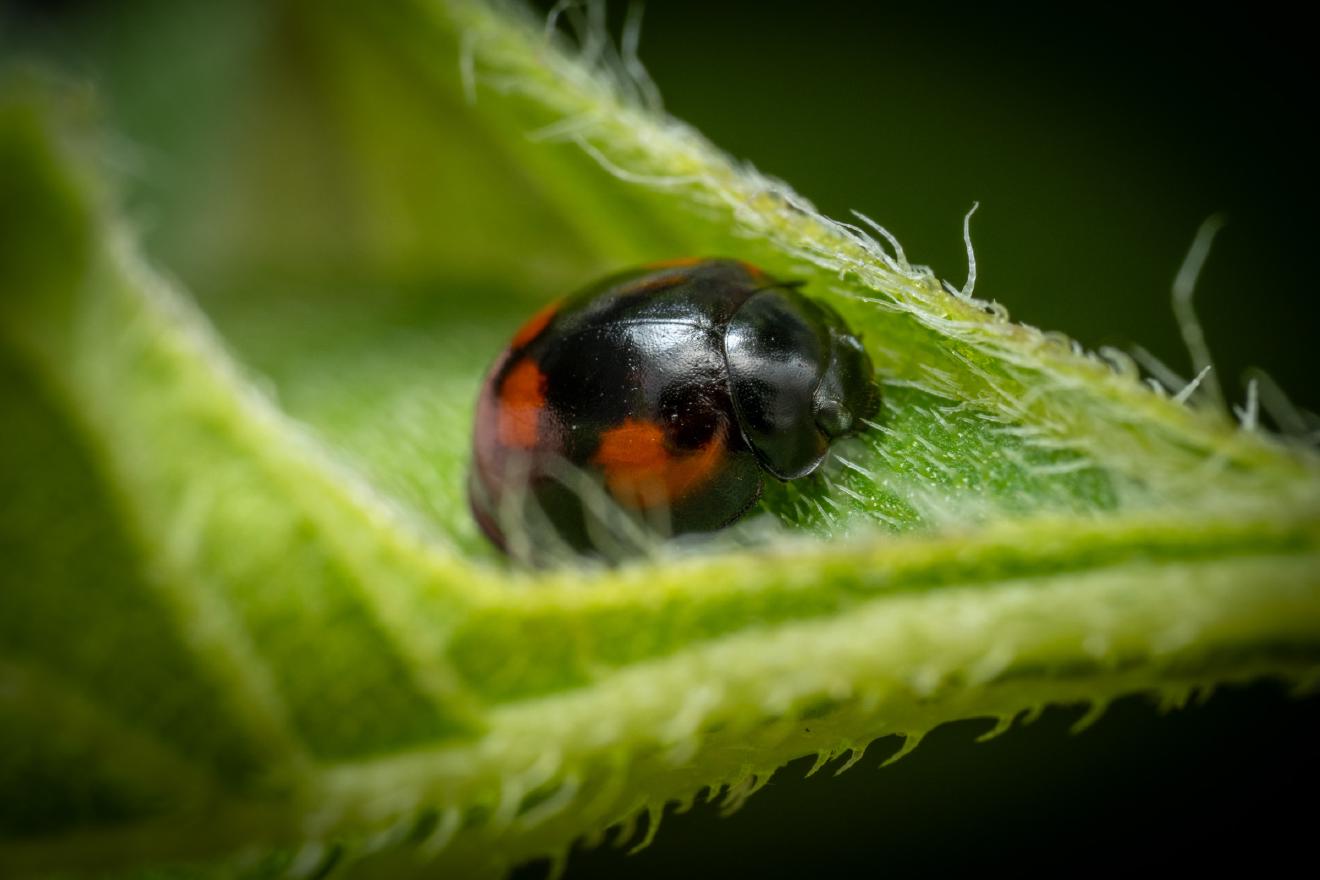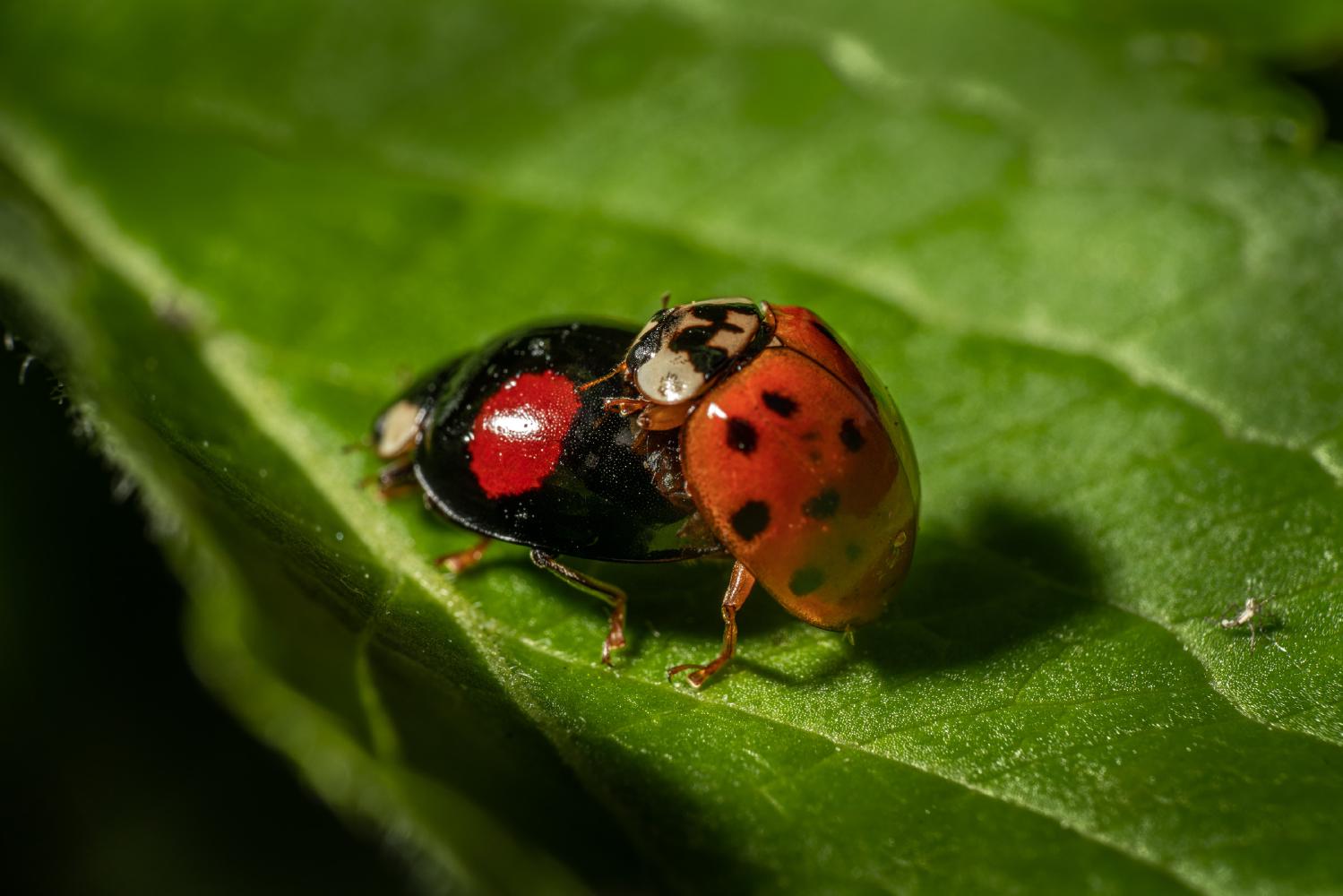Pine Ladybird
Lat. “Brumus quadripustulatus“
species
of family
“Lady Beetles“
1 species
The Exochomus quadripustulatus, commonly known as the pine ladybird, is a small beetle that can reach a length of 4-6 millimeters. It has a circular and convex shape, with black elytra adorned with red comma-shaped and round spots. This species can be found in Europe, the eastern Palearctic realm, and the Near East, and was first recorded in Ireland in 2014. The pine ladybird preys on aphids and scale insects, especially Diaspidiotus perniciosus, and can be found from April to October on conifers and areas with deciduous trees.
Description
Exochomus quadripustulatus can reach a length of about 4-6 millimeters. It is almost circular, convex and shining, with a flange around the base. The color is quite variable and may change with ageing. Usually elytra are black with two larger red comma-shaped spots and two smaller red round or oval spots. The color of these spots can also be orange or yellow, but completely reddish brown specimens may occur. The pine ladybird in both adult and larval stages preys aphids and scale insects, especially Diaspidiotus perniciosus. Adults overwinter.
Distribution
This species is present in most of Europe, in the eastern Palearctic realm, and in the Near East. It was first recorded in Ireland (County Armagh) in 2014.
Habitat
This fairly common ladybug can be found from April to October on conifers and in areas with deciduous trees, but it can also occur elsewhere.
External links
NCBI Taxonomy Browser, Brumus quadripustulatus Stippen.nl Archived 2018-11-28 at the Wayback Machine Nature Spots Bug Guide El arbol de la vida
Further reading
American Beetles, Volume II: Polyphaga: Scarabaeoidea through Curculionoidea, Arnett, R.H. Jr., M. C. Thomas, P. E. Skelley and J. H. Frank. (eds.). 2002. CRC Press LLC, Boca Raton, Florida. American Insects: A Handbook of the Insects of America North of Mexico, Ross H. Arnett. 2000. CRC Press. Kovár, Ivo (1995). Revision of the Genera Brumus Muls. and Exochomus Redtb. (Coleoptera, Coccinellidae) of the Palaearctic Region. Part I. Acta Entomologica Musei Nationalis Pragae, vol. 44, 5–124. Peterson Field Guides: Beetles, Richard E. White. 1983. Houghton Mifflin Company. The Coccinellidae (Coleoptera) of America North of Mexico, Robert D. Gordon. 1985. Journal of the New York Entomological Society, Vol. 93, No. 1. Vandenberg, Natalia J. / Arnett, Ross H. Jr., M. C. Thomas, P. E. Skelley, and J. H. Frank, eds. (2002). Family 93; Coccinellidae Latreille 1807. American Beetles, vol. 2; Polyphaga: Scarabaeoidea through Curculionoidea, 371–389.


Ancestry Graph
Further Information
Copyright

This article uses material from the Wikipedia article Brumus quadripustulatus the free encyclopedia Wikipedia which is released under Creative Commons Attribution-ShareAlike 4.0 International License). On Wikipedia a list of authors is available.
